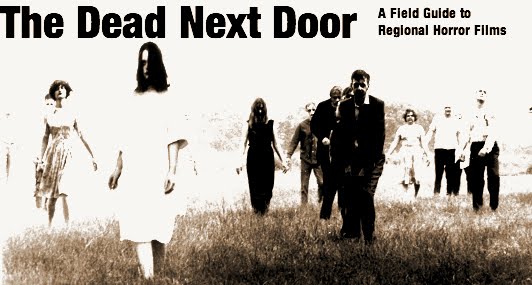
Just in case you were wondering, there is a lot more to me than just my deranged obsession with low-budget regional horror films. Case in point: my obsession with the low-budget California horror film The Creeping Terror (1964).
Considered by some to be the worst movie ever made, The Creeping Terror was produced and directed by former Bridgeport, Connecticut, resident Arthur White, a.k.a. Arthur Nelson, a.k.a. Bradley Nichols, a.k.a. Vic Savage, an actor/writer/grifter/alcoholic/philanderer whose life story is far stranger than anything he ever managed to capture on film.

Rather than get bogged down in the details, you can read more about him in this lengthy thread over at the Classic Horror Film Board. He's also the subject of a new documentary, now in pre-production, from busy filmmaker Pete Schuermann. You can follow the progress of the project over on his new Web site, www.creepfilm.com.
The article below was published just after White released his first film, the J.D. flick Street Fighter. While it's unlikely that the horror film project he announced at the time was ever going to be made (White was either looking for publicity or money or both), White was at least thinking about doing a genre film, so perhaps the seeds of The Creeing Terror were sewn from this remnants of this phantom film.
Within a year, White would abandon his wife and children and go on the lam with his teenage girlfriend. It would take another three years and several arrests before he was able to scam enough money to launch another movie project.
From The Bridgeport Sunday Herald, Oct. 25, 1959
Monroe Locale of Horror Film by Vic Savage
Calm, suburban Monroe has become a Connecticut movieland with the filming of a North Star Production science-fiction horror picture, "The Beast" under the direction of 26-year-old Vic Savage.
The North Star banner, owned by Savage and his brother John, both Bridgeporters, has already turned out "Street Fighter," shot in Southern California, currently on national lease through Joseph Brenner Associates.
Savage, who serves the triple role of producer-director-actor in the latest effort, chose the rolling Monroe hills because of the availability of certain local players whom the Savage's have known since childhood.
Only a half year ago, backed by local and West Coast money, North Star Productions became a reality and activity on "Street Fighter," the maiden effort, was begun. Soon after the movie premiered, Savage was swinging into motion on plans for the current production.
John Savage was cast in the lead role with the femme top billing going to Barbara Young. The script was written by Vic Savage, who took on the added tasks of directing and producing.
Savage, educated in Bridgeport public schools, migrated to California six years ago to be near the subject of his childhood dreams, motion pictures. He's lived on the Coast since studying and learning the mechanics and intricacies of making film.
He admits that in film making, as in other business fields, there's little substitute for experience and know how and begin close to the pros is the best place to be situated.
Getting set up has been one problem the new company has been faced with in its freshman stages. Another which confronts the company is breaking the exclusive inner circle of movie-making big time.
Savage says "Street Fighter" has already been screened in New York for people interested in marketing the film overseas. In addition, there have been inquiries from top movie companies in New York and Los Angeles on commitments for "The Beast."
The latter should be ready for print and distribution within a few months -- and Savage has plans to plunge into some topical American scene category films as North Star's next endeavor.
Savage has been encouraged with the box office showing in New York and advocates that the movie industry, providing sound family entertainment, can hold its own against the threat of television.
It's a rebuttal against the advice handed out by some entertainment experts that TV offers the only future for young people in the show business field.












